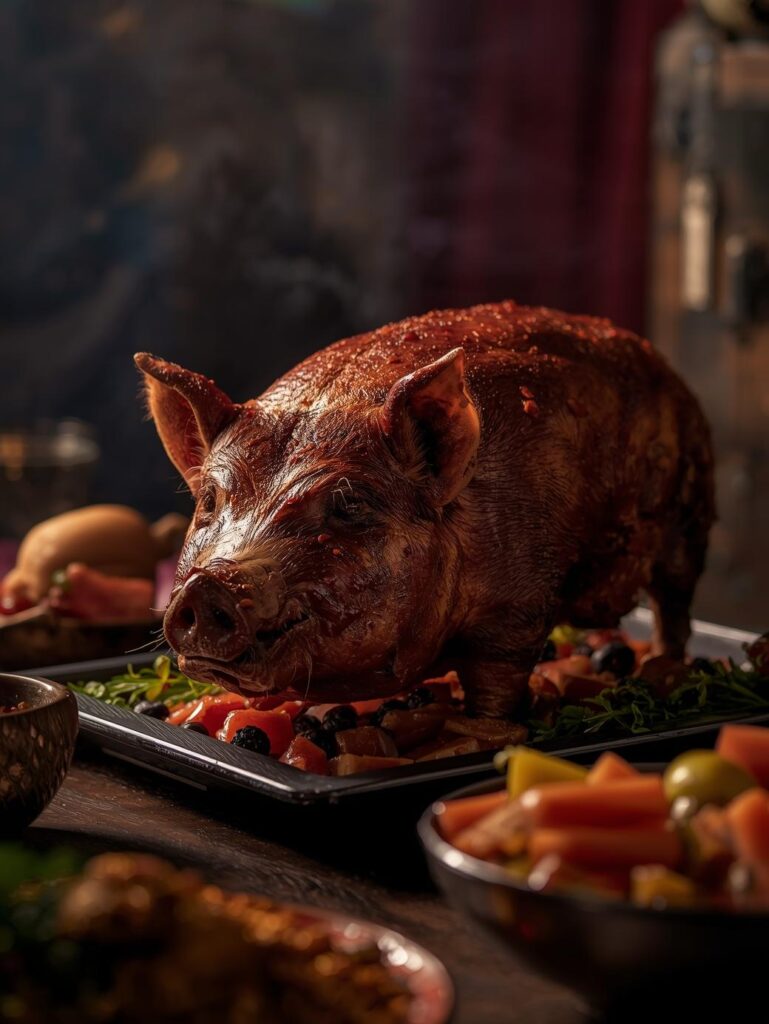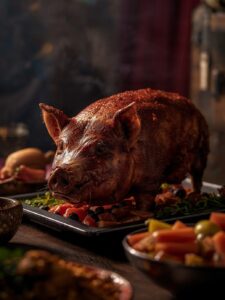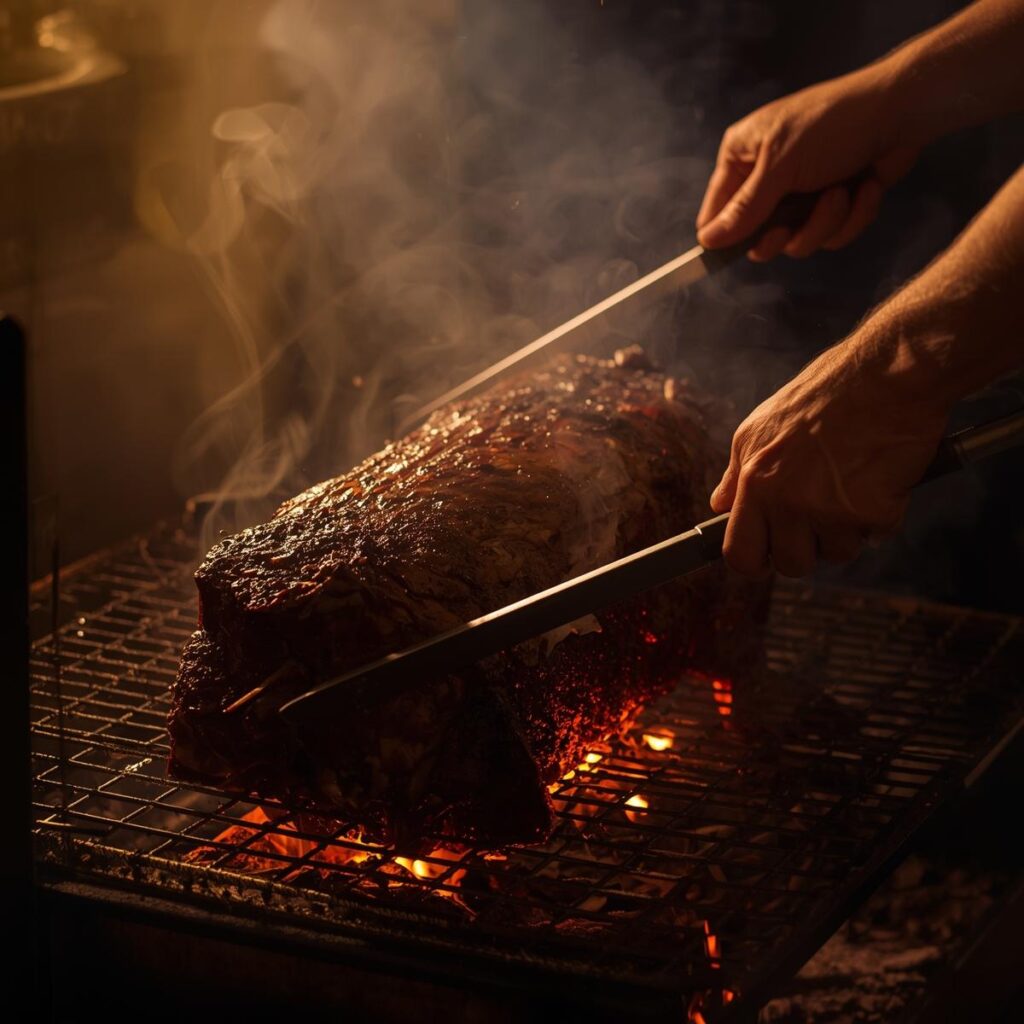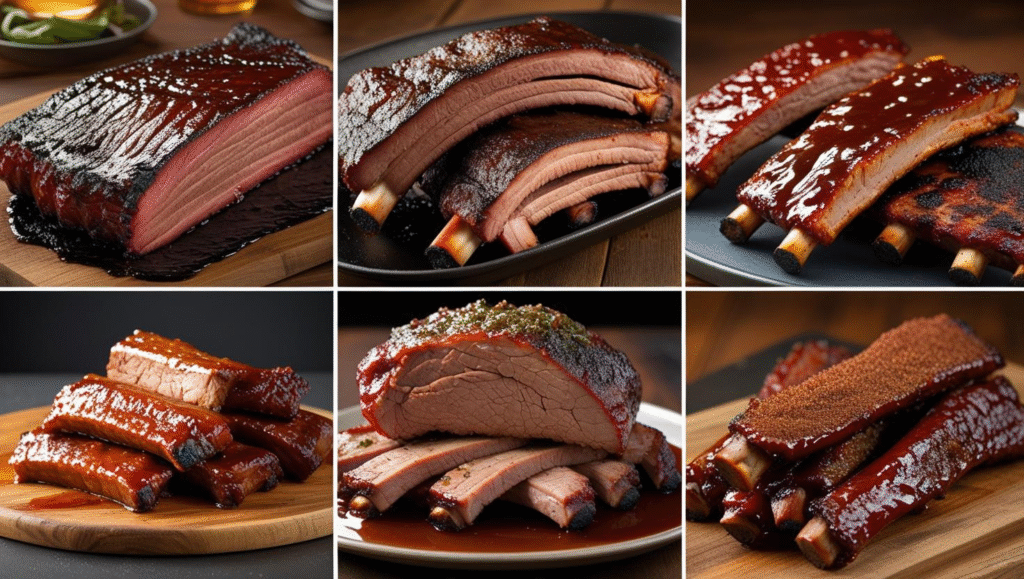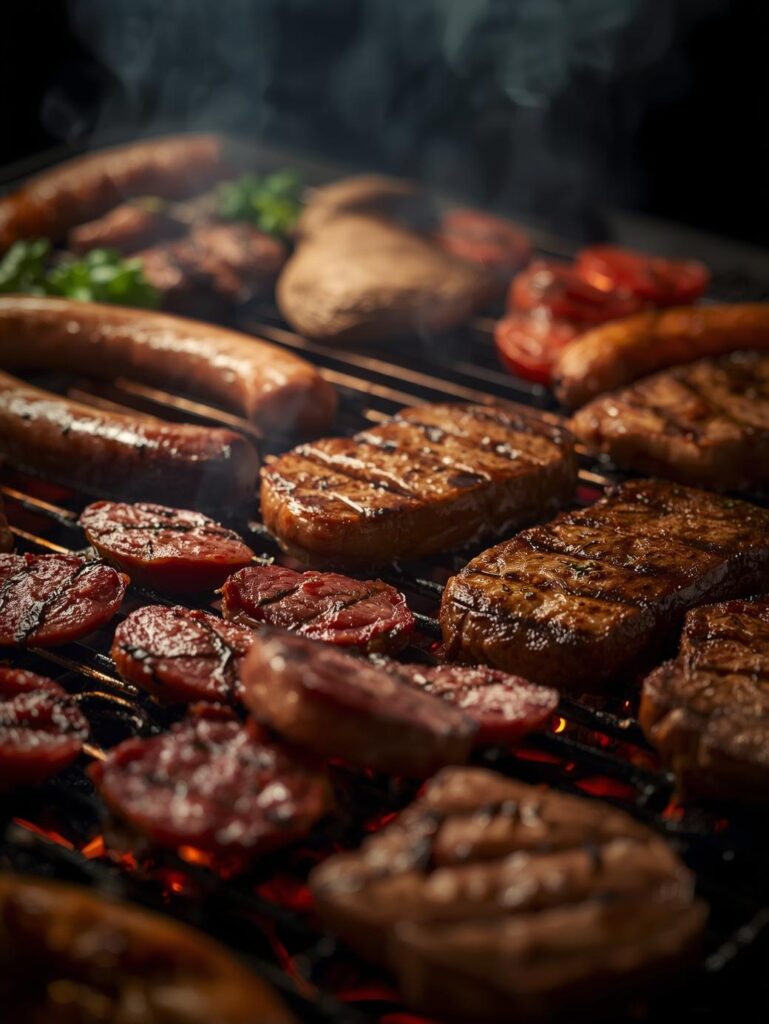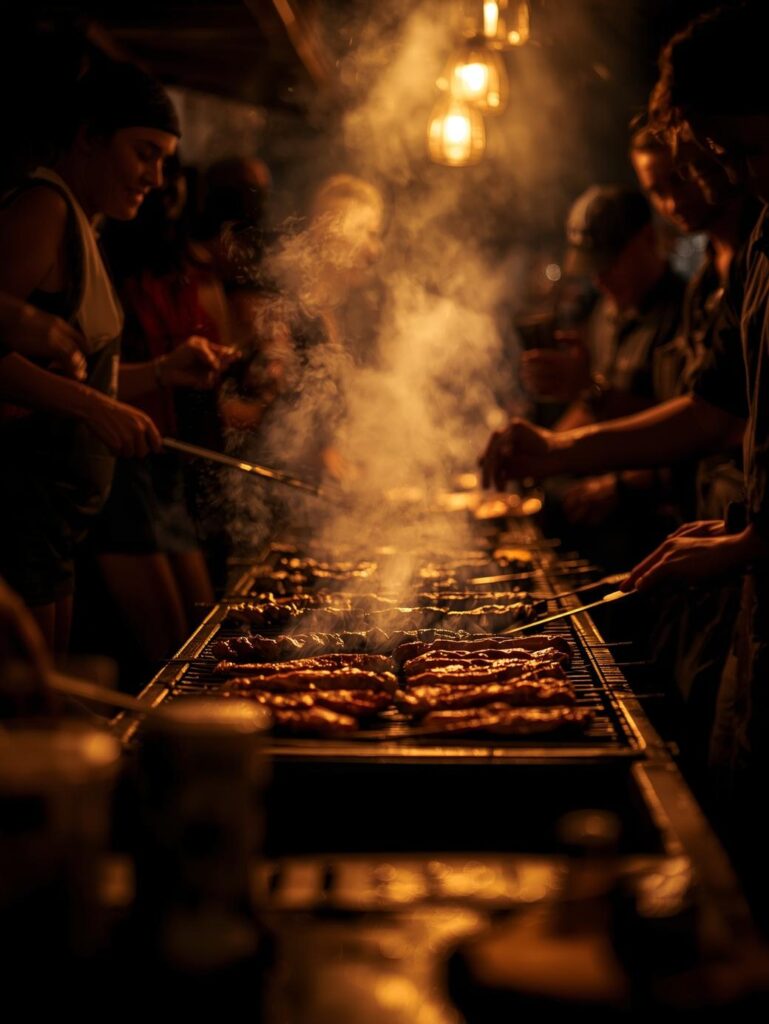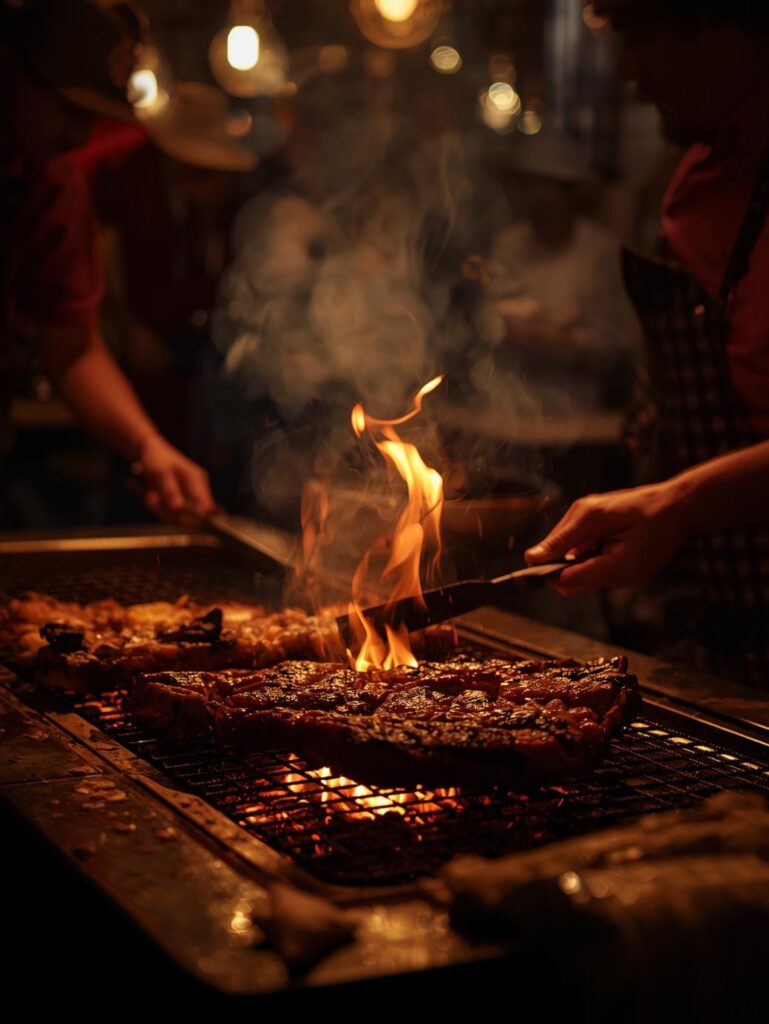Cajun BBQ Expert’s Note: This guide continues our global BBQ series with one of Louisiana’s most celebratory traditions. Cochon de Lait isn’t just roasting a pig—it’s a Cajun cultural event where whole suckling pigs meet French technique, Acadian resourcefulness, and Louisiana spice to create the ultimate celebration centerpiece. While others smoke shoulders or grill ribs, Cajuns have been perfecting the art of the whole roasted pig for generations, turning every festival, wedding, and family gathering into a feast to remember.
Cajun Cochon de Lait: Whole Pig Perfection
“In Louisiana, we don’t just cook pigs—we throw them a party. Cochon de Lait translates to ‘suckling pig in milk,’ but what it really means is community, music, and the kind of pork that makes you forget all your troubles. This isn’t low-and-slow Southern BBQ; this is Cajun celebration cooking, where the pig gets marinated in garlic, citrus, and Cajun spices, then slow-roasted until the skin crackles and the meat falls apart at the slightest touch. Laissez les bon temps rouler—let the good times roll with pork fat.”
Cajun Cochon de Lait: Whole Pig Perfection
Download the Cajun Spice Blend & Pig Prep Timeline
Bienvenue to the world of Cajun Cochon de Lait—where whole suckling pigs meet Louisiana’s legendary spice blends and French culinary technique. This isn’t just another whole pig method; it’s a cultural experience that combines Acadian resourcefulness with Louisiana’s bounty. From the bayous of Lafayette to the festivals of New Orleans, Cochon de Lait represents the heart of Cajun celebration cooking. This guide will take you deep into this delicious tradition, from selecting the perfect suckling pig to mastering the spice blends that make Louisiana cuisine famous.
🎯 THE COCHON DE LAIT PHILOSOPHY: CELEBRATION AS A COOKING METHOD
Understanding Cochon de Lait means embracing joy, community, and bold flavors.
⚙️ The Four Pillars of Cajun Cochon Culture
Community, Spice, Music, and Pork
- The Fais Do-Do Spirit: Cochon de Lait originated at community dances and gatherings called “fais do-dos.” The cooking wasn’t separate from the celebration—it was the centerpiece around which music, dancing, and socializing happened.
- French Technique Meets Cajun Boldness: The method shows its French roots in careful preparation, but the flavors are pure Louisiana—garlic, cayenne, paprika, and herbs that would make a French chef blush.
- Suckling Pig Perfection: Unlike other whole hog traditions that use mature pigs, Cochon de Lait specifically uses young suckling pigs (15-30 pounds) for their tender meat and delicate flavor that perfectly absorbs marinades.
- The Rotisserie Revolution: While early versions used pits, modern Cochon de Lait has embraced the rotisserie, which creates incredibly even cooking and that signature crispy skin while allowing the marinades to self-baste.
🎯 Cochon de Lait vs. Other Whole Pig Traditions
🇺🇸 Carolina Whole Hog
- Mature pigs (100-200 lbs)
- Vinegar-based sauces
- Low & slow smoking
- Pulled pork focus
- Wood smoke dominant
🇺🇸 Cajun Cochon de Lait
- Suckling pigs (15-30 lbs)
- Wet marinades & injections
- Rotisserie roasting
- Crispy skin & tender meat
- Spice & garlic dominant
🇵🇭 Hawaiian Kalua Pig
- Earth oven cooking
- Hawaiian salt only
- Steam & smoke
- Banana leaf wrapped
- Smoky, steamed texture
🔪 THE COCHON DE LAIT LEXICON: SPEAKING THE LANGUAGE
First rule of Cochon mastery: learn the terms or risk sounding like a tourist.
🗣️ Essential Cajun Cochon Terminology
Master the Vocabulary of Cajun Pig Roasting
- Cochon de Lait (The Star): Literally “suckling pig in milk.” Refers to both the event and the dish itself.
- Fais Do-Do (The Party): The traditional Cajun dance party where Cochon de Lait originated. Music and cooking are inseparable.
- Roux (The Base): Not just for gumbo—many Cochon de Lait marinades start with a dark roux for depth and thickening.
- Holy Trinity (The Aromatics): Onions, celery, and bell peppers—the foundation of virtually all Cajun cooking.
- Injector Marinade (The Flavor Bomb): A seasoned liquid injected deep into the meat for flavor throughout.
- Cracklin’ Skin (The Prize): The perfectly crispy, seasoned skin that everyone fights over.
- Andouille (The Side): Spicy Cajun sausage often served alongside or used in stuffings.
- Lagniappe (The Extra): A little something extra—maybe extra seasoning, an additional side, or just more good times.
📊 The Cochon de Lait Pig Selection Matrix
🎯 Choosing the Perfect Suckling Pig
| Pig Size | Weight Range | Feeds | Cooking Time | Best For |
|---|---|---|---|---|
| Petit Cochon | 12-18 lbs | 15-25 people | 4-5 hours | Family gatherings, small parties |
| Classic Cochon | 20-25 lbs | 25-40 people | 5-6 hours | Traditional fais do-do, weddings |
| Grand Cochon | 28-35 lbs | 40-60 people | 6-8 hours | Large festivals, community events |
| Selection Tips | Look for pink skin, white fat, milk-fed if possible. Avoid pigs with bruised skin or off odors. Fresh (not frozen) preferred for best texture. | |||
🔥 THE COCHON DE LAIT SETUP: TRADITIONAL VS MODERN
The cooking method has evolved but the celebration spirit remains the same.
🎪 Traditional Caja China Method (La Caja Asadora)
The Cuban-Chinese-Cajun Fusion
- The Box Design: A rectangular steel box with a removable lid that holds charcoal. The pig cooks between hot metal above and below.
- Heat Source: Charcoal piled on the lid radiates heat downward onto the pig. Creates incredible skin crispiness.
- The Flip: After 2-3 hours, the pig is flipped skin-side up to finish cooking and crisp the skin directly.
- Advantages: Incredibly crispy skin, even cooking, portable for parties.
- Disadvantages: Less traditional than rotisserie, requires specific equipment.
- Pro Tip: Add wood chunks to the charcoal for smoke flavor—pecan or oak work beautifully.
🎪 Modern Rotisserie Method (The Cajun Favorite)
Self-Basting Perfection
- The Setup: Pig secured on a heavy-duty rotisserie spit, balanced carefully to ensure even rotation.
- Heat Management: Indirect heat at 275-300°F. The rotation creates self-basting as fat renders and rolls over the meat.
- Wood Choice: Pecan is traditional—milder than hickory but more character than fruitwoods. Oak also works well.
- The Finish: Many pitmasters crank heat to 400°F for the last 30 minutes to extra-crisp the skin.
- Advantages: Incredibly moist meat, beautiful presentation, traditional method.
- Disadvantages: Requires rotisserie equipment, careful balancing needed.
🌶️ THE CAJUN FLAVOR SYSTEM: MARINADES & INJECTIONS
The marinade system is what separates Cochon de Lait from other whole pig methods.
💉 Injection Marinade Mastery
Flavor from the Inside Out
- The Base Liquid: Chicken broth, apple juice, or beer provides the liquid base. Avoid anything too sweet that might burn.
- Fat Component: Melted butter or Cajun-style “butter sauce” helps carry fat-soluble flavors and adds richness.
- Acid Balance: Apple cider vinegar or lemon juice helps tenderize and brighten flavors.
- Seasoning Arsenal: Cajun seasoning, garlic powder, onion powder, cayenne, black pepper, and Worcestershire sauce.
- Injection Technique: Inject every 1-2 inches throughout the meat, including hams, shoulders, and along the backbone.
- Resting Period: Let injected pig rest 2-4 hours refrigerated before cooking to allow flavor distribution.
🧂 External Seasoning & Paste
The Flavorful Armor
- Cajun Dry Rub: Salt, black pepper, garlic powder, onion powder, paprika, cayenne, white pepper, oregano, thyme.
- Wet Paste Layer: Dijon mustard, minced garlic, and oil create a paste that helps the dry rub adhere and forms a crust.
- Under-Skin Flavor: Gently separate skin from meat and rub seasoning directly on the meat surface for double-layer flavor.
- Cavity Stuffing: Onions, celery, bell peppers, garlic, and citrus fill the cavity to steam from inside.
- Skin Preparation: Score skin in diamond pattern, rub with oil and salt for maximum crispiness.
- The Lagniappe: Some cooks add a sprinkle of brown sugar to the skin for extra caramelization and crackle.
📋 THE ULTIMATE COCHON DE LAIT TIMELINE
The 24-Hour Journey to Cajun Pig Perfection
Day Before Prep
Source pig, prepare injections/marinades, make spice blends, prep sides.
Morning Of (4-6 hours before)
Inject pig, apply rubs, truss, start fire, set up equipment.
Cooking Phase (4-8 hours)
Slow roast, maintain temp, baste if needed, prepare for final crisp.
Final Hour & Serve
Crank heat for crisp skin, rest pig, carve dramatically, serve with sides.
🚨 COCHON DE LAIT TROUBLESHOOTING: COMMANDEERING COMMON PROBLEMS
🎯 Fixing Common Cochon de Lait Problems
| Problem | Cajun Description | Cause | Solution |
|---|---|---|---|
| Rubbery Skin | “Skin like a tire” | Low final heat, too much moisture | Finish at 400°F+, pat skin dry first |
| Bland Meat | “Tastes like nothing, cher” | Weak injection, no cavity aromatics | More aggressive injection, stuff cavity |
| Uneven Cooking | “One side raw, one side burnt” | Poor rotisserie balance, hot spots | Balance carefully, rotate fire position |
| Burnt Seasoning | “Black as Louisiana crude” | Sugar in rub, heat too high | No sugar in rub, lower heat, foil areas |
| Dry Meat | “Dry like the Atchafalaya in August” | Overcooked, lean pig, no injection | Use thermometer, milk-fed pig, inject well |
🏁 MASTERING THE CAJUN CELEBRATION
Mastering Cochon de Lait means more than just cooking a pig—it means embracing the Cajun spirit of joy, community, and living well. This isn’t just a cooking method; it’s a way of celebrating life itself, where the cooking process is as important as the eating, and every step is infused with the “joie de vivre” that defines Louisiana culture.
Your Cochon de Lait journey starts with gathering your people—this is not a solo endeavor. Then comes the joyful work of seasoning, injecting, and preparing the pig with the bold flavors that make Cajun cuisine famous. Finally, you’ll experience the magic of the reveal, when that beautifully crisp, aromatic pig emerges to oohs, ahhs, and maybe some zydeco music.
So gather your crew, fire up the rotisserie, and remember the three rules of Cochon de Lait mastery: season with abandon, cook with joy, and always make lagniappe. Your journey to becoming a Cochon master starts now, cher.
🇺🇸 START WITH CAJUN INJECTION →
Master the signature injection marinade that makes Cochon de Lait unforgettable
Explore More Southern BBQ Traditions: Continue your journey through America’s diverse BBQ landscape.

